Cockatiels may be small, but what they lack in size they make up for in personality. When socialized appropriately, these fun parrots are friendly birds who love spending time with their humans. In fact, cockatiels are considered one of the friendliest birds out there! Cockatiel babies are extra cute too, as they wobble about and playfully explore their world. Let’s take a closer look at some adorable pictures and amazing facts about baby cockatiel!
1. Baby Cockatiel Chicks Are the Smallest Species of Cockatoo in the World

Cockatiels don’t reach their mature size until they are one year old.
©tatchai/iStock via Getty Images
The cockatiel (Nymphicus hollandicus) is the smallest member of the cockatoo family, Cacatuidae. You might be more familiar with them as household pets, but cockatiels are actually native to Australia! These colorful birds usually hang out in semiarid or arid areas, but they always stay close to water. They are social birds and usually spend time in pairs or in small flocks. Much like many other cockatoo species, cockatiels have bright colors and patterns, as well as a distinctive crest atop their heads. However, while other cockatoos typically measure 12 to 24 inches tall, cockatiels only grow about 12 to 13 inches. In addition, cockatiels have much longer tail feathers than cockatoos do.
2. Baby Cockatiel Chicks Are Very Small When They Are Born
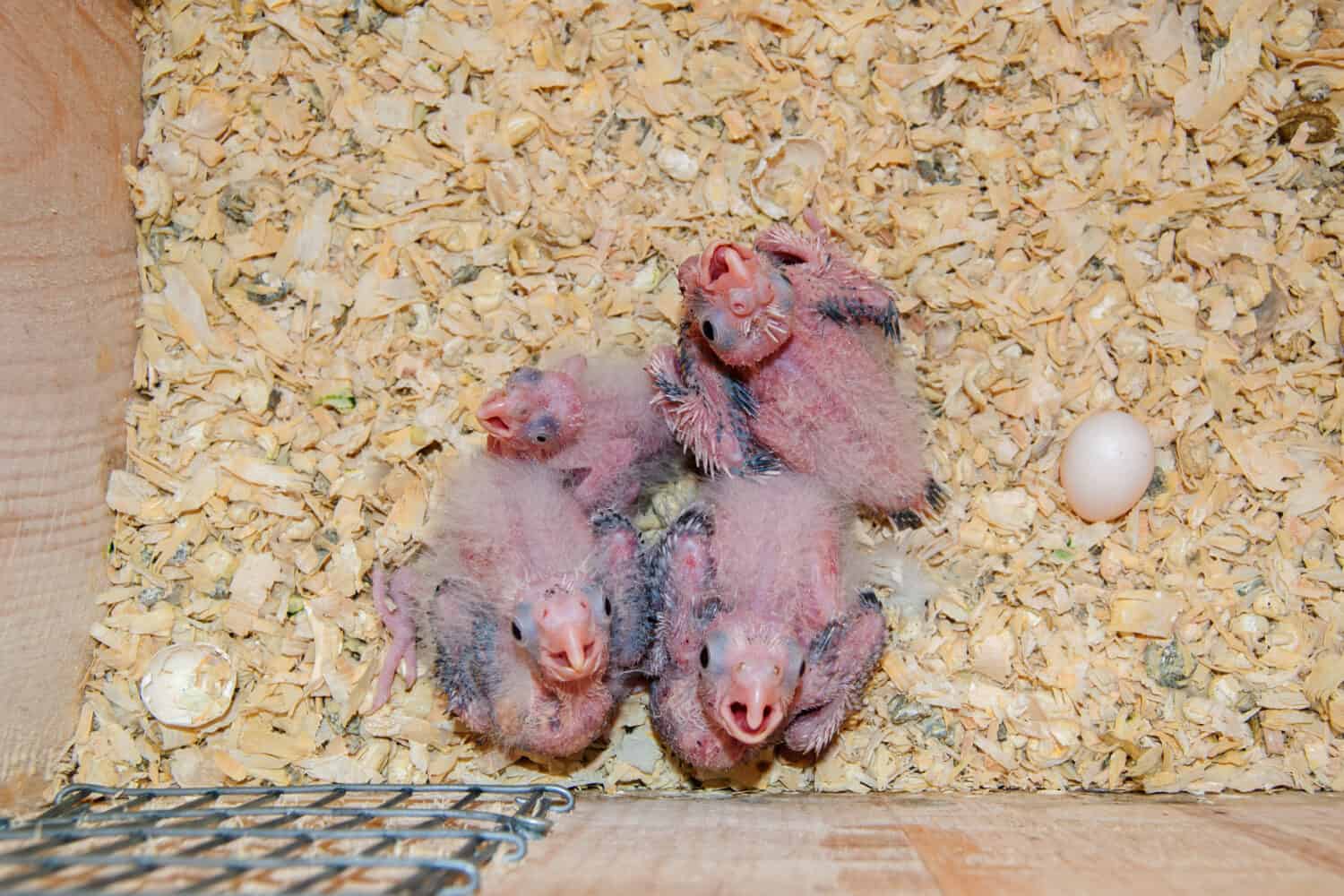
Baby cockatiels weigh less than an ounce when they are born.
©YK/Shutterstock.com
Newborn baby cockatiel chicks are super small. When they first emerge from their eggs these tiny birds are only about an inch long and weigh just 0.35 to 0.70 ounces (10 to 20 grams)! Baby cockatiels are altricial, which means that they are completely dependent on their parents. These tiny creatures are too weak to walk or even stand up when they are born, relying on their parents for everything that they need.
3. Newborn Baby Cockatiel Chicks Look Super Weird
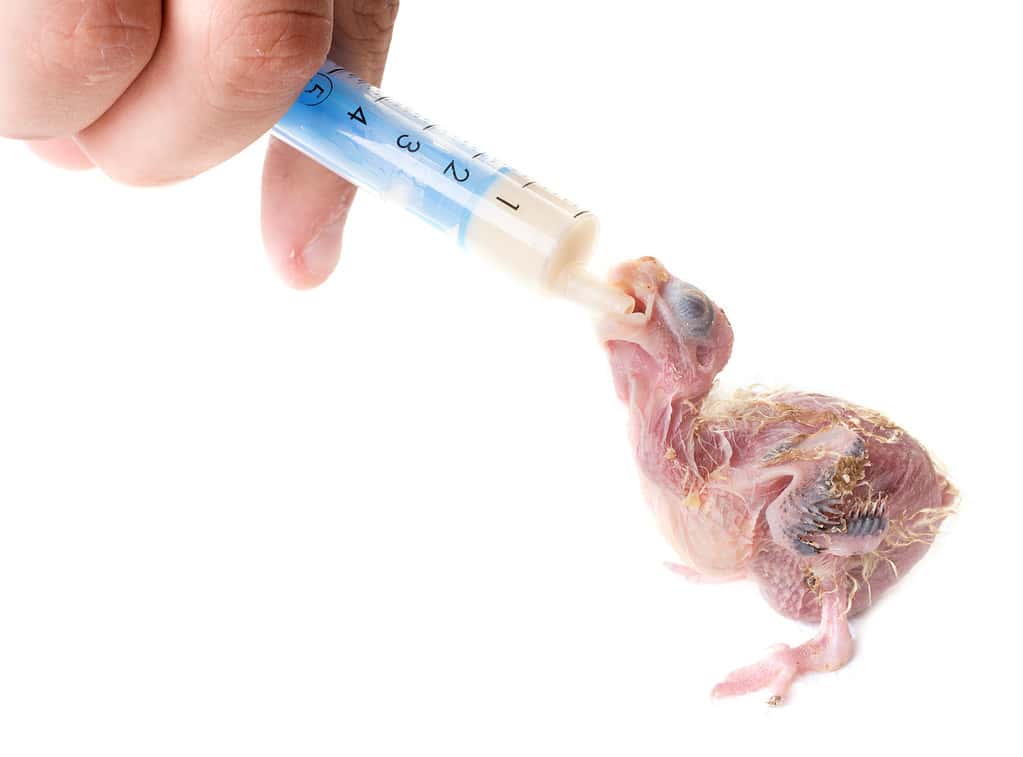
Baby cockatiels are born blind and don’t open their eyes for a week or two after they hatch.
©cynoclub/iStock via Getty Images
When they first hatch from their eggs, baby cockatiel chicks look nothing like their cockatiel parents. In fact, they are born without any feathers at all and have large heads and tiny bodies that make them look more like little aliens than birds. Their naked bodies and tiny beaks are pale, and their skin has a strange texture to it. And they don’t even open their eyes for several days after they are born! Within the first 24 hours, however, cockatiel chicks begin to develop a bit of soft downy fluff on their bodies that helps them to retain heat.
4. Cockatiels Chicks Grow Quickly
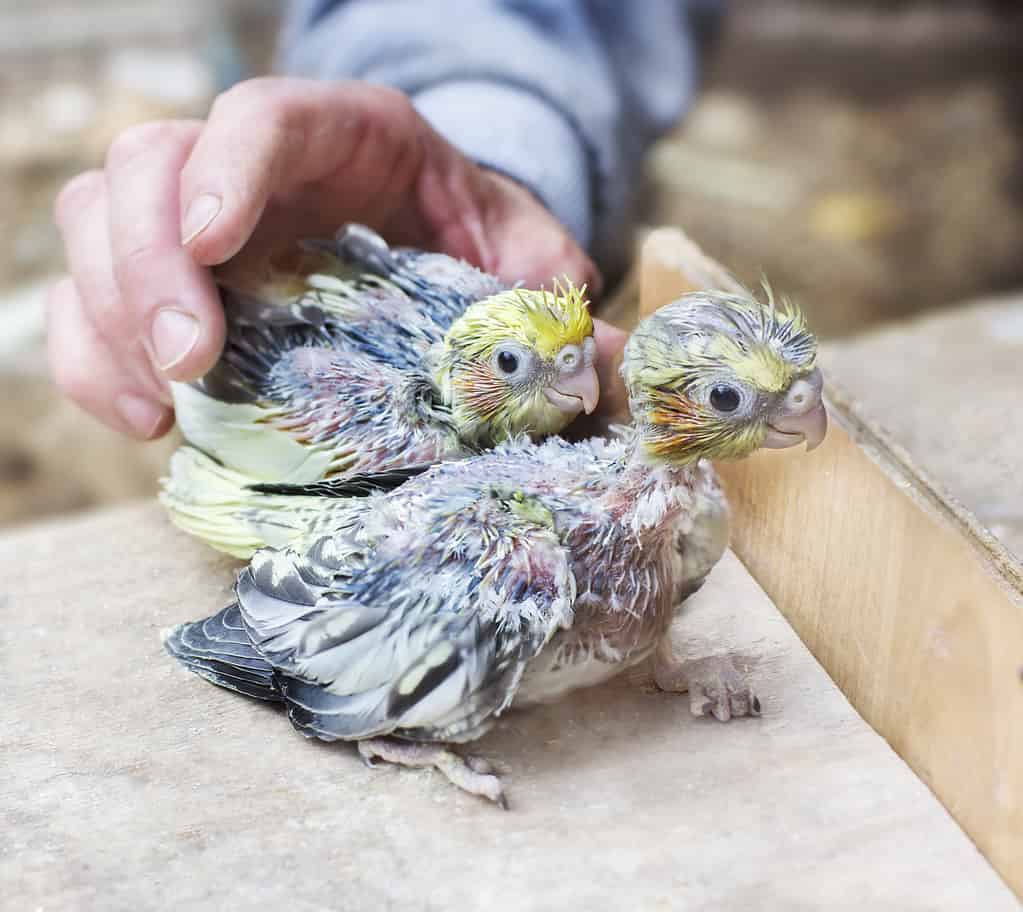
When they are first born, baby cockatiel chicks can’t stand up.
©AGEphotography/iStock via Getty Images
Baby cockatiel chicks are tiny when they hatch, but by the end of their first week of life, they double in size and body weight. After about one week, the chicks can stand on their feet and begin to grow pin feathers. Baby cockatiels grow pretty fast and when they are around two weeks old, they are already four to five times their original size! They also begin to develop a gray color to their bodies as their pin feathers open up. By the time they are three weeks old, the chicks are pretty confident standing on two legs but may still struggle to balance on one foot.
5. Both Parents Take Turns Caring for Baby Cockatiel Chicks
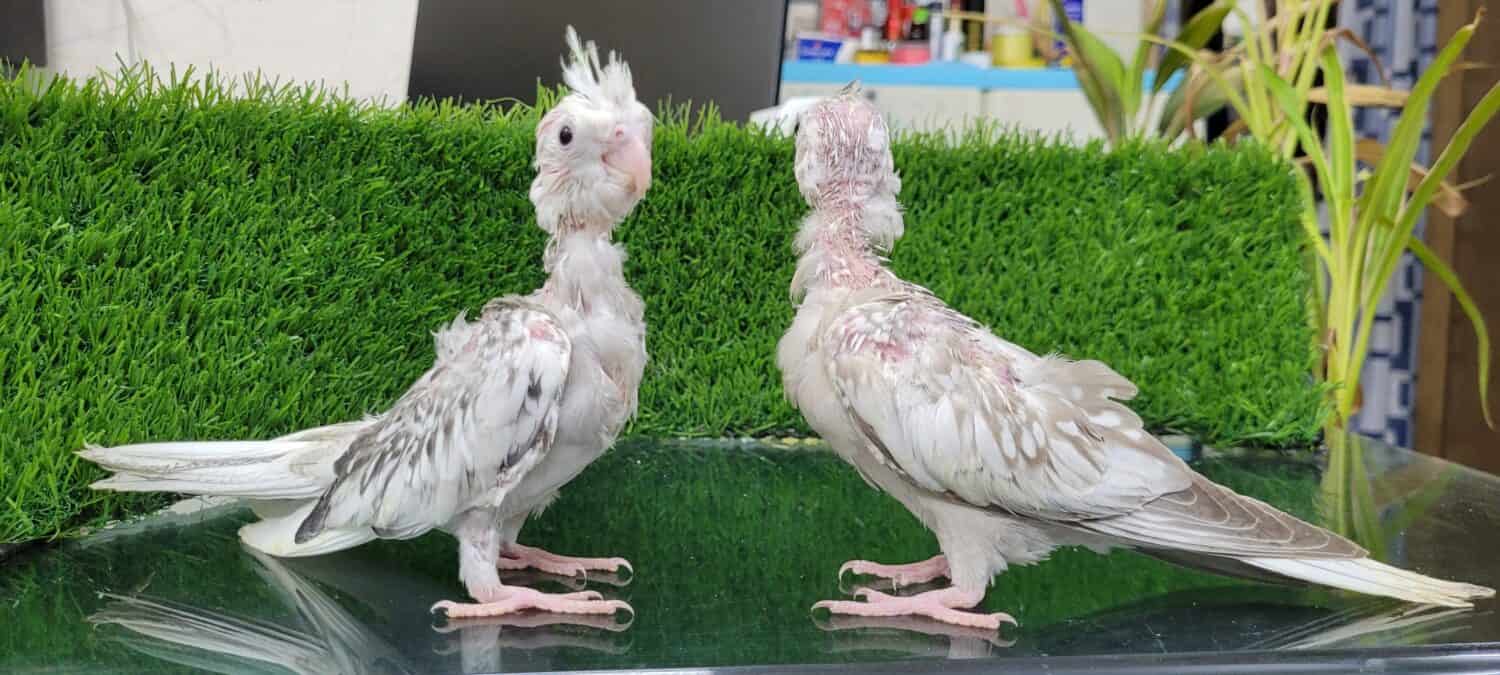
As they grow, baby cockatiels slowly gain confidence and balance.
©Creative arts gallery/Shutterstock.com
Female cockatiels lay one egg every other day or so until their nest contains around three to seven eggs. Both male and female cockatiels take turns sitting on the eggs and keeping them warm while they incubate for the next 17 to 23 days. After the chicks are born, the parents continue to care for them, taking turns sitting on the tiny chicks to keep them warm. They also feed their baby chicks regularly with partially digested and regurgitated food. In other words, cockatiel parents eat their own food and then bring it back up from their stomachs to give to their baby chicks.
6. Baby Cockatiels Have a Special Egg Tooth
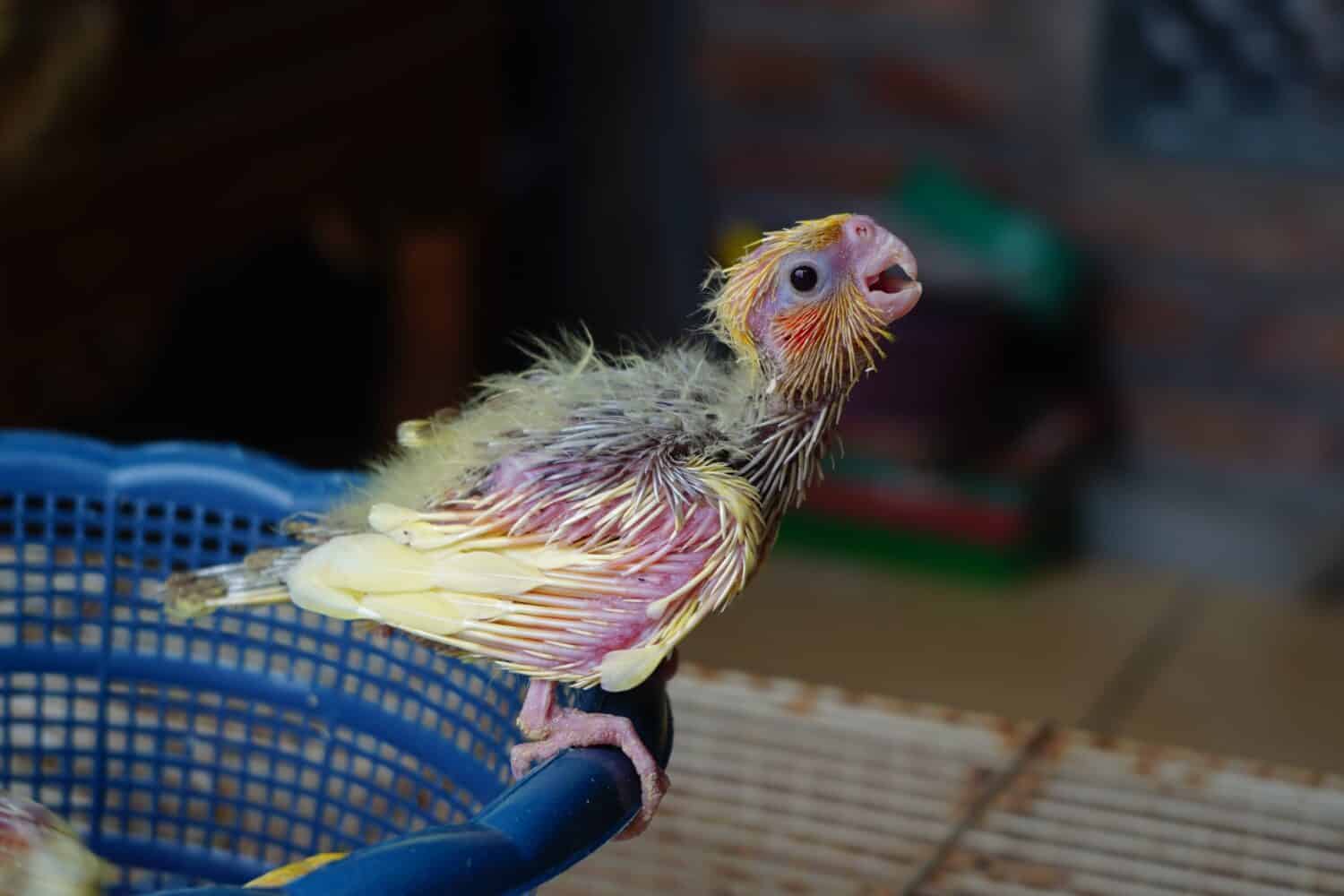
Baby cockatiel chicks first grow pin feathers, which are thin and prickly.
©Neil Firman/Shutterstock.com
When it’s time to hatch, baby cockatiels use their unique egg tooth to help them break through their eggs. The egg tooth is essentially like a small but sharp bump on the tip of the chick’s beak, which gives them extra help as they pick their way out of the egg. It can take several hours for a cockatiel chick to finally hatch. Breaking out of the egg is called “pipping”, and it is an exhausting process for a new baby cockatiel chick!
7. Baby Cockatiels Chicks Have Big Personalities
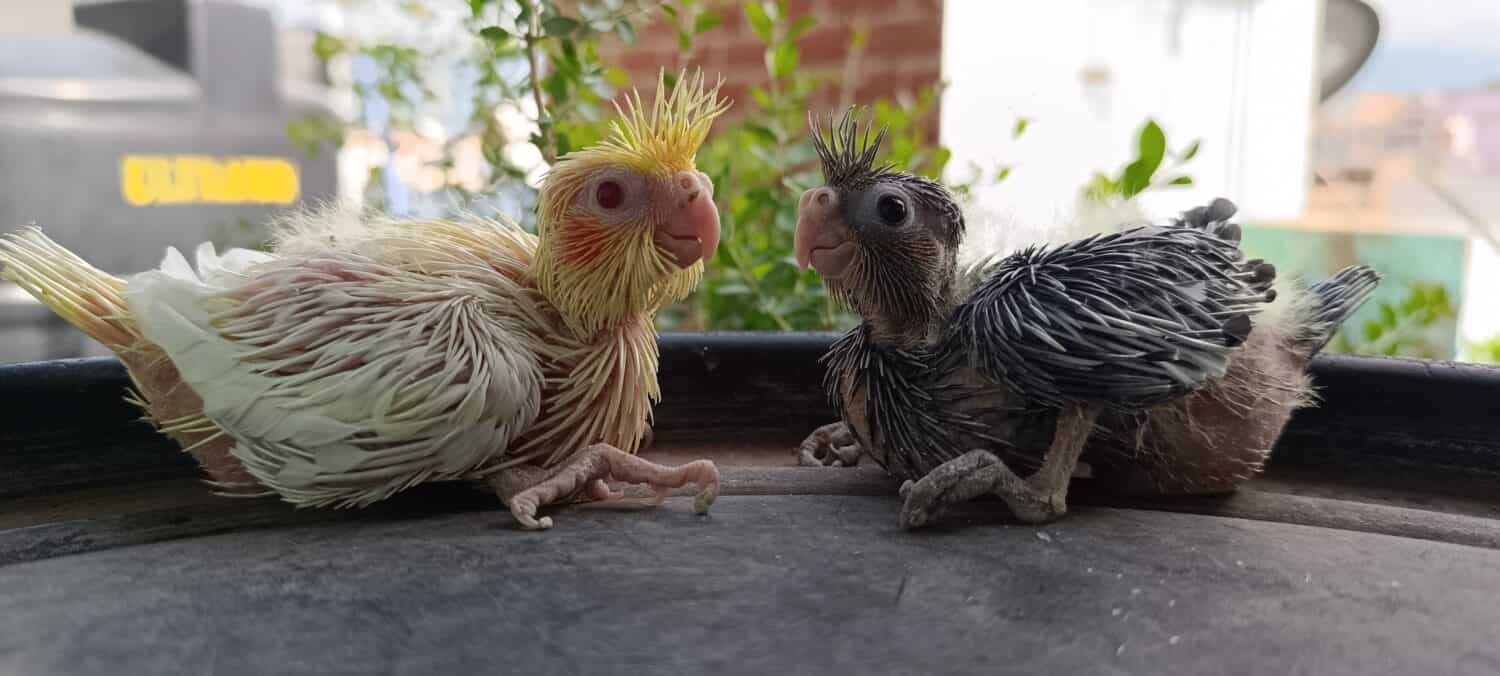
Cockatiels are extremely social and love to show off.
©JsYasararafath/Shutterstock.com
Thanks to their smaller size and manageable care requirements, cockatiels are a great pet for first-time bird owners. But despite their smaller size, these charming birds still have big, vibrant personalities. When socialized appropriately, baby cockatiel chicks will grow up feeling safe and comfortable around people, and many will even develop strong bonds with their humans. Cockatiels also love to vocalize and mimic sounds, and they love to play.
8. Baby Cockatiels Are Very Smart
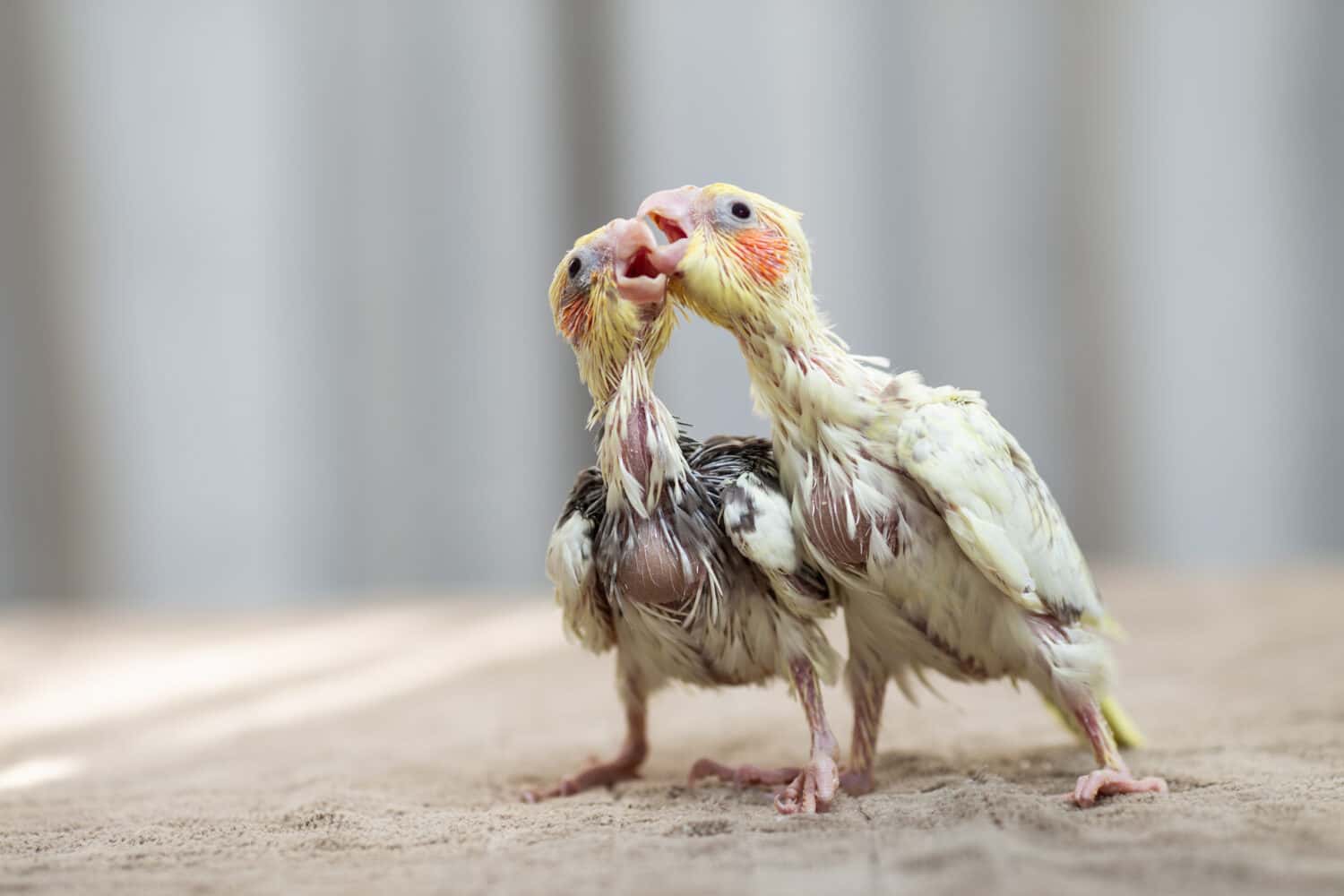
Baby cockatiel chicks look scruffy until all their feathers are fully grown in.
©DuxX/Shutterstock.com
Just like other larger cockatoos, cockatiels are very social and intelligent birds. When kept as pets, they can learn a variety of different tricks. Some can whistle and learn to vocalize as well; mimicking sounds they hear around the house. Many pet cockatiels recognize and bond with their owners, and some even learn how to use tools. Cockatiels also have good memories and can remember things in order. They have excellent problem-solving skills and understand object permanence.
9. Today There Are Several Different Color Morphs of Baby Cockatiels
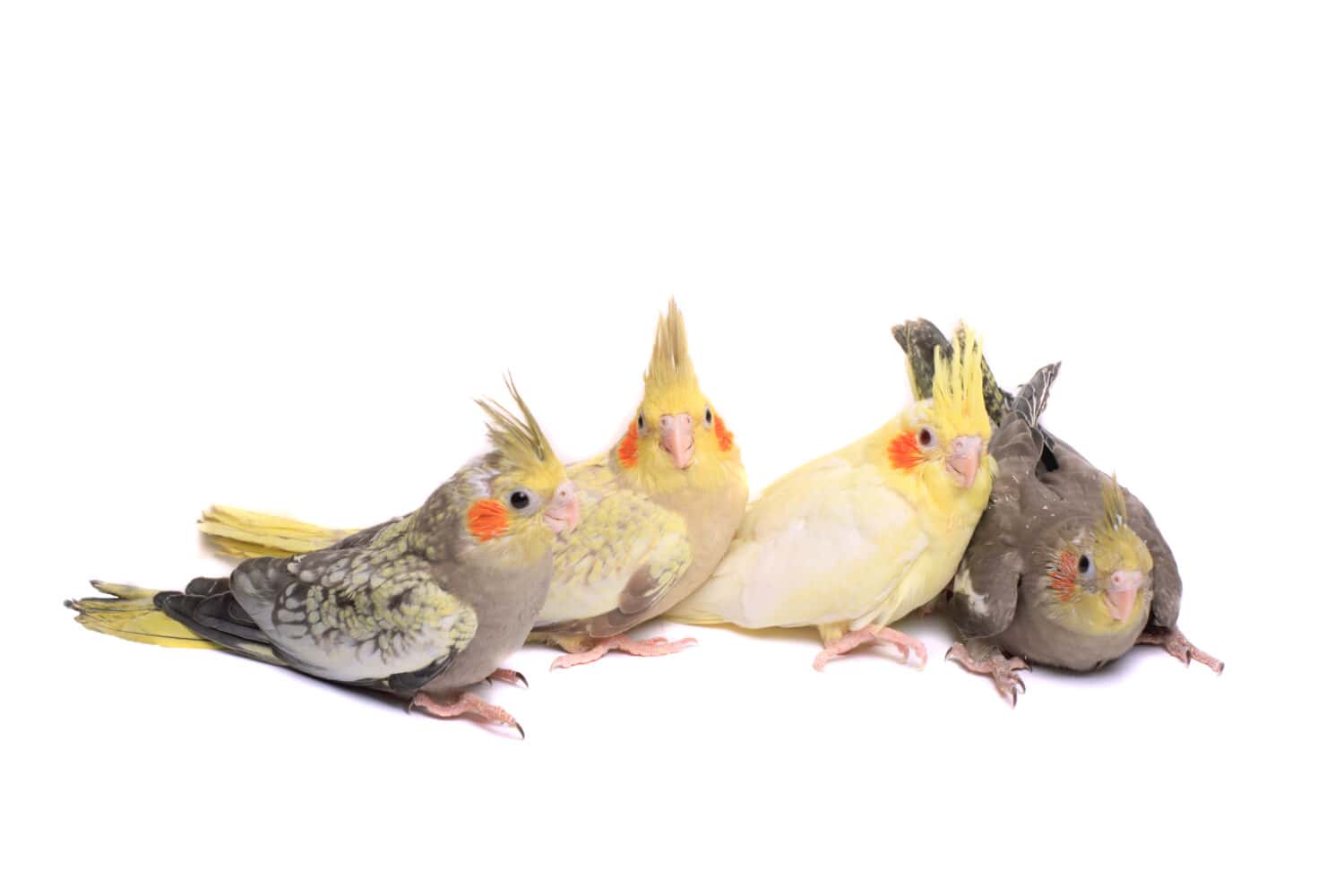
Baby cockatiels have shorter tails than adults until they are at least a year old.
©Rosa Jay/Shutterstock.com
In the wild, cockatiels are gray, with a yellow face and a round orange cheek patch. In captivity, however, many breeders have developed many different color mutations and variations. For example, today there are albino cockatiels, which are white or creamy in color with reddish eyes and pale legs. Lutino cockatiels, on the other hand, have beautiful white feathers with orange cheek patches, a yellow mask, and red eyes. Pied cockatiels have a similar appearance to wild birds but with more yellow or off-white coloring. Cinnamon cockatiels have warm brown or tan feathers, and pearl cockatiels have small pale gray or white dots decorating their bodies.
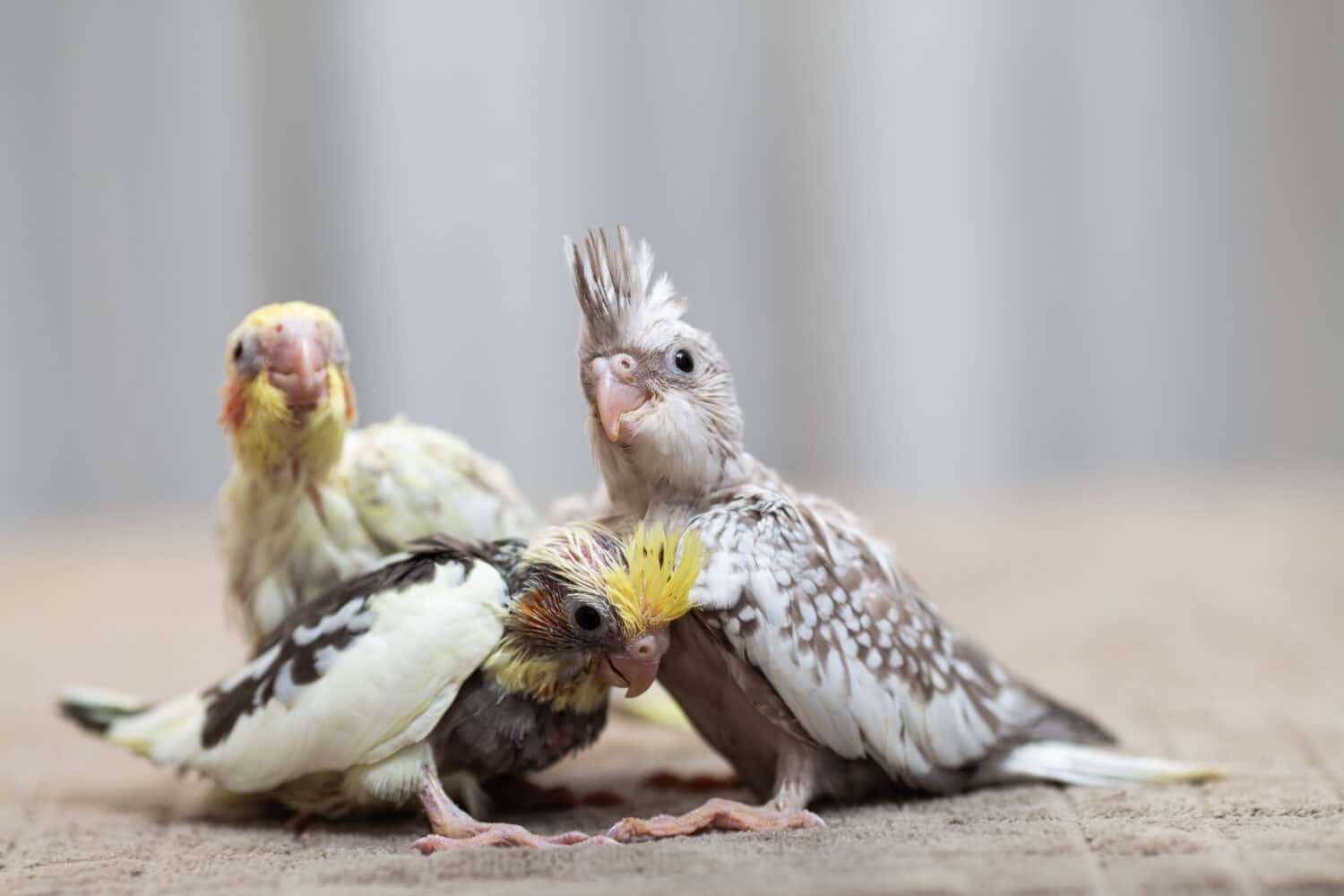
Cockatiels are very intelligent birds.
©DuxX/Shutterstock.com
Thank you for reading! Have some feedback for us? Contact the AZ Animals editorial team.







